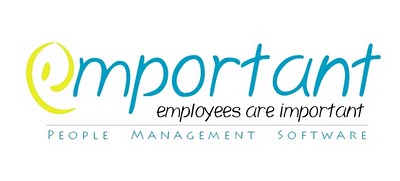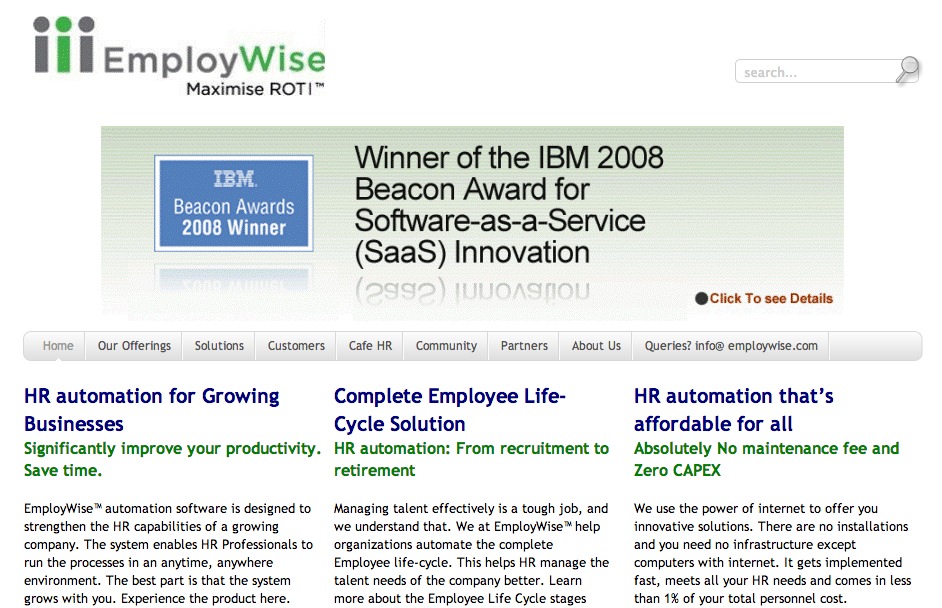Started in 2011 with only three employees, Emportant has grown to serve thousands of users with their cloud based end-to-end HR and Payroll products. Co-Founder and CEO, Emportant, Sandeep Todi says his company is focused to appeal to firms that would identify with its motto, ’Employees are Important’. In an interview with ProductNation, he says his biggest learning is you must always take good care of your customers even as you keep expanding.
How would you describe the shifting paradigm from Outsourcing software to Software as a Service?
Software as a Service (SaaS) allows you to try business class software with ease and without being tied down with painful and expensive procurement and deployment cycles. With no upfront investment, it’s easy to try and buy SaaS products. In that sense, a SaaS network of products mimic the behavior of a ‘technology grid’ that you can tap into. In contrast, building custom software is like installing a captive power generation unit at prohibitive cost that is hardly justified when the grid is at your doorstep.
Companies have also realized that SaaS is not just amortizing costs over several years, but a new way of thinking. You are not selling a box, rather a product that’s constantly on the move. SaaS products see anything around 4-12 releases a year, are built on rapid release cycles. Moreover, customer feedback is acknowledged and incorporated in these rapid release iterations, something which is impossible in outsourced software or licensed software. The customer is therefore always on the latest release and does not suffer from “version fatigue”. Businesses are realizing this by adopting SaaS products with very little risk, tasting success and then quickly going on to embrace this new pedagogy.
In what way does this new model benefit users in terms of effectiveness, cost and support?
This SaaS apps-grid or ecosystem of apps that can co-exist with each other, is becoming more powerful by the day. No outsourced software is able to deliver this as elegantly and as cost effectively as SaaS product delivered over the cloud.
SaaS software is able to deliver benefits rapidly through new releases and eliminates risk of obsolescence. FUD (fear, uncertainty and doubt) has been used by traditional software vendors, scaring users about impending obsolescence. Having left with little choice, customers had to regardless opt for expensive upgrades and consulting efforts. A transparent SaaS business always keeps users on the latest version and ensures that this version works 100% with all customer environments. This dramatically lowers the cost of maintaining the product because you are no longer dealing with different versions that must be supported for different customers.
Tell us the story about your recently launched web based HRMS and Payroll software, Emportant? How did it happen?
We are in the HR software business for nine years now. Having sold our product PowerApps to several mid-to-large enterprises, we delivered mission critical and high performance HR/Payroll software to customers like Bank of Baroda, Ford, TI Group, ITC, L&T, GTL etc. In 2009, we wanted to adopt cloud computing in a big way and struggled for two years. It was then that we decided to carve out a separate company and a separate product for the cloud – this was the genesis of the birth of Emportant in 2011.
In creating Emportant we initially feared it would cannibalize our own product PowerApps. Thankfully, that did not happen and now both products have a good market presence of their own in two different customer segments.
Emportant.com drives every HR process with the Employee at the center. Every HR / Manager / Employee interaction can be initiated by the Employee and is available on a self-serve platform.
How easy or difficult is it to market a software product in India?
The going was pretty tough in 2011 as cloud was not very well accepted back then. Now it’s different, as CIOs are less wary about the cloud and more concerned about the stability of the vendor, maturity of the cloud product, etc.
Custom software is still viewed as a viable alternative primarily due to the inexpensive cost of hiring programmers. Moreover for a product sold to mid-market and large businesses, you have to traditionally sell one-to-one, engage in multiple meetings and convince customers about the solution fitment without landing into the trap of customization.
What are the factors that make a successful software product and the challenges faced in taking it to the market?
For a product business the product roadmap, customer segmentation and a delightful user experience are extremely crucial.
We have focused on how HR can be employee friendly and have a focus on achieving business results using software tools. The product’s benefits must be easily understood and should quickly demonstrate value. We have successfully kept bringing original thought and real customer feedback into our product, coming out with unique and uncomplicated ways of solving business problems.
Emportant drives HR administration in real time and moves away from the concept of HR software being only a system of record. This model of ours has led to a success rate of > 80% in converting prospects to customers.
We are now looking at stepping up our efforts on social media and on overseas customer acquisitions. Establishing credibility amongst large customers continues to pose interesting challenges and working with business partners means we have to convince them about long term value vs upfront margins.
What is the future of software products vis-a-vis services?
Software products and services will always have their own separate customer segments. I don’t think software products can solve every business problem out there and services have an important part to play. Customers are beginning to realize that service consumption burdens them with unreasonable costs of operation and in an increasingly competitive world they would rather adopt a product if one exists which can meet their requirements. The benefits of products to the customer in terms of cost, sustainability and continuous improvement are already well established.
Look at Dropbox’s recently announced Datastore API. They have just commoditized the offline storage market for independent app makers. In fact, storage is now being turned from a service into a product as will be any service which can be wrapped into a standardized and repeatable delivery.
What learning would you like to share with other product companies?
Every launch of a new version is a learning experience for us. We are faced with the challenge of what to build in the next version, how does it affect pricing and how does it affect our current customers. What we’ve learnt is that you must always take good care of your current customers even as you keep expanding. To ensure this, we reward existing customers with new features for free whenever we release new versions and keep them protected on price changes perpetually.
What role do you foresee ProductNation to play in nurturing the growth of software products?
The biggest obstacle to exponential growth of Indian products is the lack of access to experts in marketing, product growth and cutting edge technology. Too many companies face mortality because of an idea or execution gone wrong.
ProductNation will hopefully help overcome these hurdles quickly and open up the opportunity for Indian products to be recognized globally.





